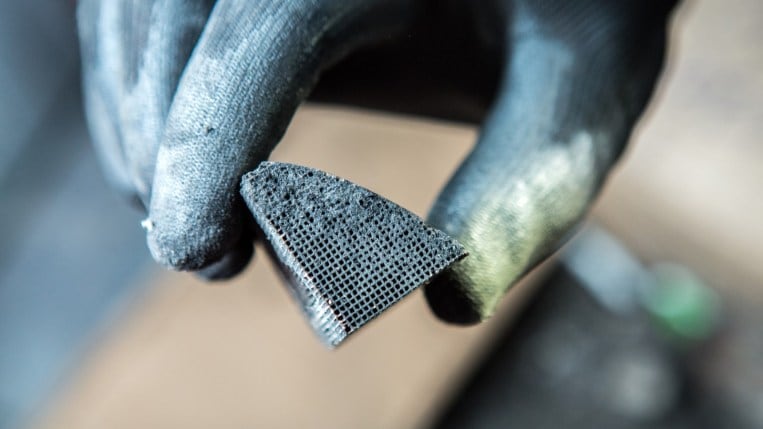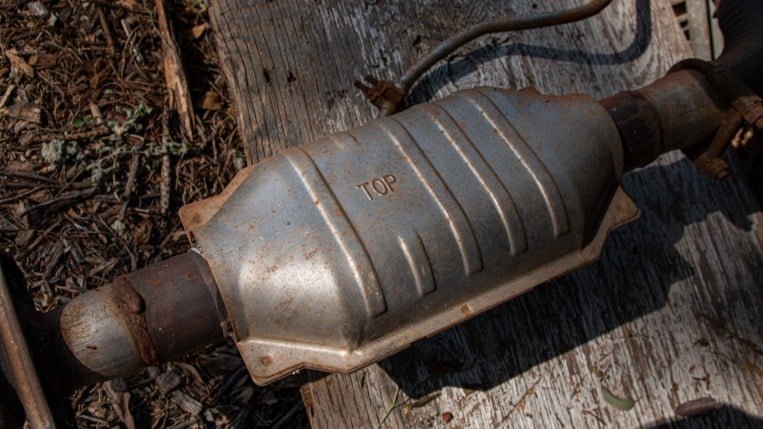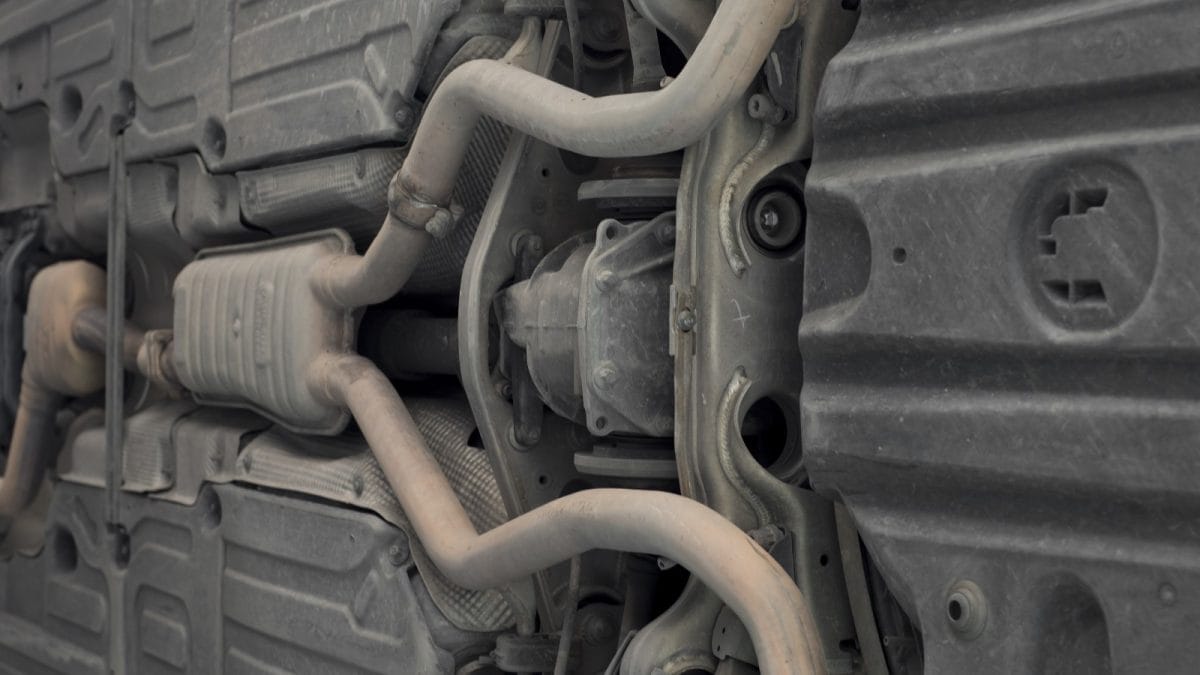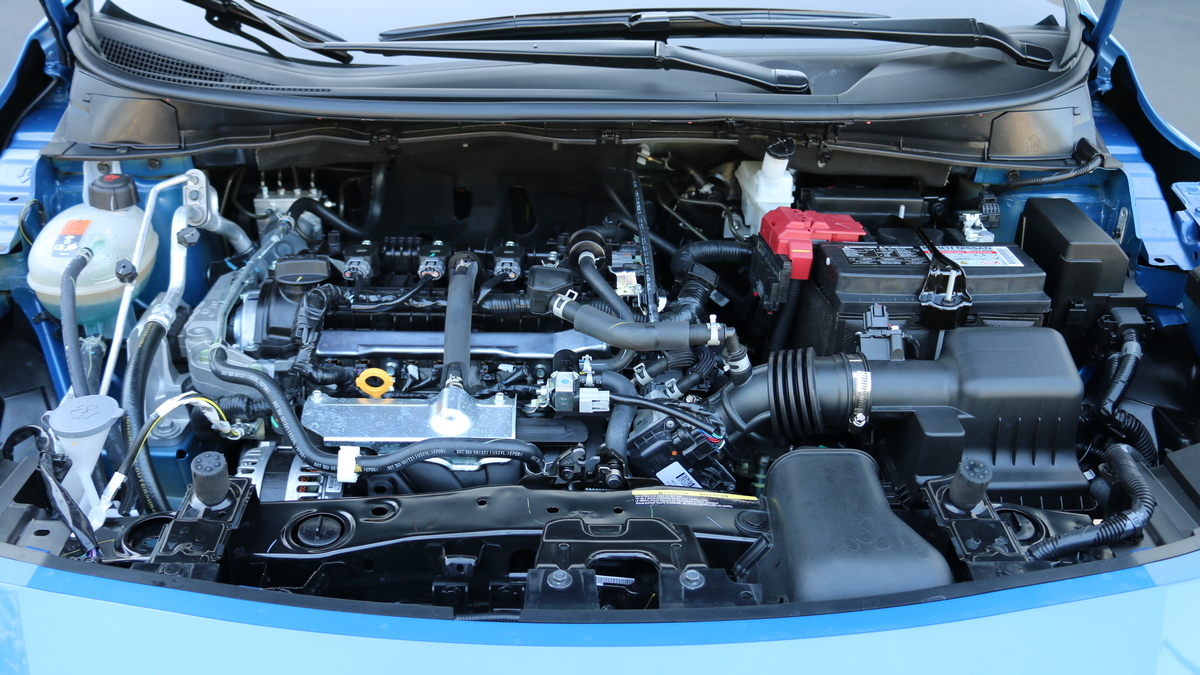Quick Facts About Catalytic Converter Theft
- Catalytic converter theft surged during the pandemic, but the latest statistics show a 68% decrease from 2023 to 2024. That is attributed to increased awareness and the declining value of the metals in the component.
- Thieves target catalytic converters for their valuable metal content and easy removal, and some fetch up to $1,000 on the black market.
- Park inside or in well-lit areas to deter criminals, and consider etching your catalytic converter to deter theft.
Every day, thieves steal catalytic converters from cars across the country, from Atlanta to Eugene, Oregon. Big cities in particular have struggled with this type of car theft. But there’s some good news: The number of catalytic converter thefts has dropped sharply after peaking during the pandemic.
The National Insurance Crime Bureau (NICB) reports that in 2018, 1,298 Americans filed insurance claims for stolen catalytic converters. By 2020, that number jumped to 14,433. The problem got even worse in 2022, with 95,318 theft claims. Nearly one-third of these thefts happened in just two states: California had about 24,000 cases, and Texas had around 8,000.
Fortunately, things are improving. The NICB says that in 2022, there were almost 8,000 catalytic converter thefts each month. In 2023, this dropped to about 3,600 per month, or 43,674 for the year. The latest data, released in May, shows the trend is still going down. In 2024, there were 14,036 reported thefts — a huge 68% decrease from 2023.
Public awareness, police crackdowns to dismantle theft rings, legislative actions that create new laws or strengthen existing laws, and decreased commodity prices are factors contributing to the decline. The NICB tracks legislative efforts to help curb the theft of these devices. In 2022, there were 163 bills across 37 states, and 31 laws enacted. So far this year, the group is tracking 96 bills from 39 states that introduce new legislation or strengthen existing laws.
Catalytic converters are an expensive, easily removed part in almost every car with an internal combustion engine, and you need to know how to protect yours. Thankfully, if you take these easy steps, it’s unlikely that the catalytic converter in your vehicle will get stolen.
- What Is a Catalytic Converter?
- Why Do Thieves Target Catalytic Converters?
- How Do Thieves Steal Catalytic Converters?
- What Cars Are Targeted for Catalytic Converter Theft?
- How to Prevent Catalytic Converter Theft
- What to Do if Your Catalytic Converter Is Stolen
What Is a Catalytic Converter?

A catalytic converter is part of your car’s exhaust system and functions as a chemical filter made of rare metals. It keeps harmful pollutants from entering the atmosphere by passing hot exhaust gases through a honeycomb of metals like palladium and rhodium. Chemical reactions convert some of the toxic gases into harmless gases.
A catalytic converter lasts about 10 years, depending on how much you drive your car. A small one is about the size of a loaf of bread, while a large one can be three times that. They’re mounted on the bottom of cars and easily found on the exhaust system, which is part of the problem.
Many drivers of gas-powered cars in the U.S. must go through emissions inspections, and their cars will not pass without a catalytic converter.
Why Do People Steal Catalytic Converters?
The black market trade in catalytic converters began as the rare metals that make them work soared in value. So, why is this car part a target for thieves?
- Catalytic converters are desirable to thieves because they include high-value metals that can be recycled and resold.
- Thieves can easily and quickly remove catalytic converters.
How Much Is a Catalytic Converter Worth?
Thieves might be able to get up to $1,000 for a stolen catalytic converter, depending on what vehicle it came from, its age, and its condition. What makes them valuable is the recyclable precious metals inside.
- Palladium sold for around $500 an ounce about a decade ago. These days, it’s trading at around $975 per ounce.
- Rhodium sold for about $640 an ounce 10 years ago. As of this writing, it goes for nearly $5,400 per ounce.
At the end of 2022, these metals were about $1,800 per ounce and $12,200, respectively.
How Do Thieves Steal Catalytic Converters?

Unfortunately for vehicle owners, stealing a catalytic converter is very easy to do. Thieves usually slide underneath a car with a battery-powered reciprocating saw and cut it right out of the exhaust line. It takes about three minutes or less and makes as much noise as any other power tool.
What Cars Are Targeted for Catalytic Converter Theft?
There is no reliable count of which cars’ catalytic converters thieves target most often. But law enforcement and insurance experts say a few patterns have emerged.
One is that hybrid cars seem to be at particular risk. The valuable metals in a catalytic converter degrade as they pull pollutants out of exhaust gas. Hybrids have lower emissions than purely gasoline-powered cars. So the metals in their catalytic converters tend to last longer. For the same reason, newer cars are at greater risk than older cars.
RELATED: Thieves are After Toyota Prius Catalytic Converters
Thieves also target cars that they can easily get under quickly. So, police reports show that trucks, including Ford F-Series, and SUVs are at particular risk. Why? They’re higher off the ground and easy to slide under. Thieves can get in and out quickly.
It’s harder for thieves to take the components from some European models easily. Automakers including Audi, BMW, and Volkswagen place the catalytic converter closer to the engine instead of the end of the exhaust system.
Perhaps the most expensive catalytic converter on the market is found in the Ferrari F430, and every F430 has two. But good luck fitting under a Ferrari quickly. They’re less than five inches off the ground.
A full-size truck, however? Most thieves can get under one of those easily in any parking lot. Some car dealers have had to install security cameras because thieves have targeted lots full of brand-new pickup trucks and made off with a fortune in rhodium in a few hours.
But no vehicle is safe if its catalytic converter has expensive metals inside. In 2023, thieves stole the catalytic converter from the Oscar Mayer Wienermobile during a stopover in Las Vegas. In another newsworthy event from the year before, one enterprising thief in Connecticut cut catalytic converters out of 18 school buses in one night.
What Cars Do Catalytic Converter Thieves Avoid
- Gasoline-powered engines made before 1974 don’t have catalytic converters. That was the year when stricter emissions regulations mandated the component.
- Diesel engine converters don’t contain the precious metals that thieves want.
- Electric cars do not have catalytic converters.
MORE: Do I Need Car Insurance Before Buying a Vehicle?
How to Prevent Catalytic Converter Theft
According to data from Kelley Blue Book parent company Cox Automotive, the average cost for catalytic converter replacement at a dealership is nearly $2,300. In 2020, J.D. Power estimated the cost to replace the Ferrari F430’s two catalytic converters would run at least $7,540 plus labor.
Thankfully, these simple tips can help protect your car’s catalytic converter from thieves and avoid a trip to the repair shop. As with most crimes, the key to staying safe is to make the crime a bit harder so thieves move on to an easier target. That means you don’t need to take elaborate steps to protect yourself.
Law enforcement experts recommend the following tactics to protect your car from catalytic converter theft:
- Get your catalytic converter etched. Many police departments and some muffler shops will happily etch your license plate number onto your car’s catalytic converter for free. Thieves have a much harder time selling a converter if it can be tied to a particular theft, making it almost worthless to them.
- Park indoors if possible. What thief would break into a garage when there are easier targets outside?
- Look for cameras. When you need to park your vehicle, choose parking garages and lots covered by cameras.
- Park in a well-lighted area. Thieves are less likely to steal where they’re more likely to be seen.
- Consider installing a dash camera. Some dash cams use motion sensors and will record anyone close enough to your car to get to the catalytic converter. The presence of a camera can be enough to scare thieves off to find easier prey.
- Install an anti-theft device. Some car shops offer shields designed to make a catalytic converter harder to remove. We’re aware of no studies on how well these devices work, but it seems logical that thieves might move on to cars without them.
We should note that painting your catalytic converter with identifying information doesn’t often work. Catalytic converters get hot enough in daily operations to burn off anything other than high-heat paint.
MORE: Police Warn: Protect Yourself From Gas Theft
What to Do When Your Catalytic Converter Is Stolen
A loud rumbling sound and unmistakable exhaust smell may indicate that someone has stolen your catalytic converter, which might cost $3,000 to replace. Now what?
- Turn off the vehicle and don’t drive. Thieves might have damaged other critical parts when stealing a catalytic converter.
- Report the incident to the local police department.
- Contact your insurance carrier if you have comprehensive coverage and intend to file a claim.
- Consult with your auto shop or dealership and arrange to replace the catalytic converter and thoroughly inspect the exhaust system.
Insurance Coverage for Catalytic Converter Theft
An auto insurance policy with comprehensive coverage typically covers theft and associated repairs. Talk to your insurance provider about any changes in coverage or premiums related to catalytic converter theft.
Editor’s Note: This article has been updated since its initial publication.








